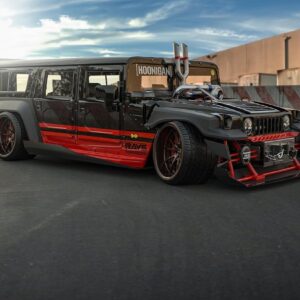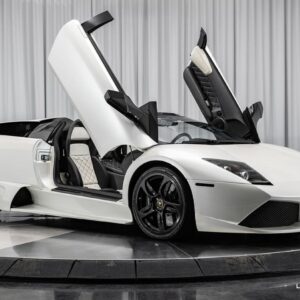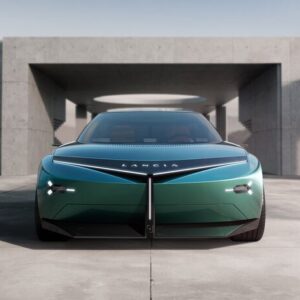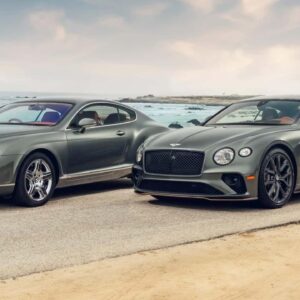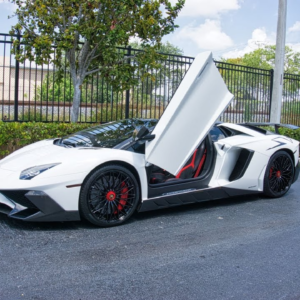From the K24A1’s horsepower to the K24Z7’s torque, an in-depth look at Honda’s hall-of-fame engine.

Imagine, if you will, a hall of fame for engines that have been tuned more than any other. A few instantly come to mind as first-ballot inductees, including six-cylinders such as Toyota’s Supra-lative 2JZ-GTE and Nissan’s Godzillic RB26DETT, and Chevy’s old-school-meets-new-school LS V-8. There’s a four-cylinder superstar, as well, that’s also a shoo-in for the hall. Called the Honda K24, it’s one of the most impressive and oft-tuned production engines in automotive history.
The K24 wasn’t the first Honda engine to entice the JDM tuning crowd. Its late 1980s B-Series line legitimized Honda’s bonafides thanks to engines like the B16A3, which powered the fun-in-the-sun Civic Del Sol and produced as much as a whopping 100 hp per liter. But once the K24 came along, it surpassed the B-Series in almost every way.
Honda hasn’t stopped iterating on the K24, either. It’s undergone many updates over the past two decades, resulting in a staggering 18 variants as of this writing. Outside of the B-Series, the K24 is arguably the best and most adaptable engine family Honda has ever built. The following is a comprehensive list of everything you need to know about Honda’s amazing hall of famer, the K24 engine

Which Honda Cars Are Powered By A K24 Engine?
Since its start in 2002, many variations of the Honda K24 engine have appeared in myriad models. From the unassuming and family-friendly CR-V to the pulse-quickening Civic Si, the K24 has shown that aside from reliability, its most extraordinary ability might be adaptability. The following is a list of all the cars that have come equipped with a K24 engine in the United States:
- K24A1: 2002-2009 Honda CR-V
- K24A2: 2004-2008 Acura TSX
- K24A4: 2003-2005 Honda Accord, 2003-2008 Honda Odyssey, 2003-2006 Honda Element
- K24A8: 2006-2007 Honda Accord, 2007-2011 Honda Element
- K24W (Earth Dreams): 2013-2017 Honda Accord, 2015-2019 Honda CR-V
- K24V7: 2016-present Acura ILX
- K24W7: 2015-2020 Acura TLX
- K24Y2: 2012-2015 Honda Crosstour
- K24Z1: 2007-2009 Honda CR-V
- K24Z2: 2008-2012 Honda Accord LX/LX-P
- K24Z3: 2008-2012 Honda Accord LX-S/EX/EX-L, 2009-2014 Acura TSX, 2008-2012 Honda Accord
- K24Z4: 2008-2012 Honda CR-V
- K24Z6: 2010-2014 Honda CR-V
- K24Z7: 2012-2015 Honda Civic Si, 2013-2015 A

Over two-plus decades, the K24 has had many different iterations and has shown that with the right mods, it is capable of crazy power. But in stock form, production output peaked in the 2015-2020 Acura TLX with the K24W7, which made 206 horsepower at 6,800 rpm and 182 lb-ft of torque at 4,500 rpm. The 2014-2015 Honda Civic Si comes in second with its K24Z7 that made 205 hp and 174 lb-ft of torque, while the 2006-08 Acura TSX rounds out the podium in third place with its K24A2, also making 205 hp at 7,000 rpm, but a lesser 164 lb-ft of torque at 4,500 rpm. Finally, the 2013-15 Acura ILX gets an honorable mention with the same K24Z7 as the 2012-15 Civic Si but making just 201 hp at 7,000 rpm and 170 lb-ft of torque.
Can The K24 Engine Handle A Turbo?
Yes, easily. Even with its stock internals intact, the K24 can support a turbo or supercharger without any serious work to the bottom. In factory-stock form, a turbocharged K24 can make upwards of 400-500 hp. Beyond the 500-hp mark, though, it would be in the engine’s (and owner’s) best interest to swap some of the K24’s internals for more substantial and race-oriented parts.
Boosting the K24 beyond the 500-hp mark will also affect several other things that should be considered. In most cases, the manual or automatic transmission must be beefed up or replaced with a stouter unit. The next problem would be putting all that power to the ground, necessitating several suspension upgrades to maximize traction. An aftermarket ECM will also be a worthwhile purchase to manage fuel delivery and help maintain a car that can be lived with daily (if desired). But when it all comes together just right, a turbo K24 can make something even as quick as a Ferrari, much, much faster.

Are The K20 And K24 Engines The Same?
No, but they are from the same family. The K20 came first in 2001, and as the name suggests, it is a 2.0-liter engine, whereas the K24 checked in as a larger 2.4-liter engine just a year later. The more significant displacement of the K24 results from a higher deck height of 9.1 inches (231.5mm), while the K20 has a shorter 8.3-inch (212mm) deck height. That taller deck also results in the K24 having a longer 99mm stroke than the shorter 86mm of the K20. The K20’s bore and stroke are the same length, which allows it to have a higher redline than the K24, whereas the K24 has a larger bore than stroke, which enables it to produce more torque at lower rpms. What both engines have in common is immense popularity due to their massive power potential and adaptability to various makes and models across the automotive univers

Are The K-Series Engines Better Than B-Series Engines?
At the risk of causing a tuner civil war, objectively speaking, the K-Series is a superior engine compared to its predecessor. There’s no denying the B-Series engine can be credited for igniting the import hot rodding crazy of the late ’80s. Specifically, the B16, which introduced the world to VTEC, complemented that new technology with a lightweight aluminum block, and an insane 9,000-rpm redline. Although 2.0- and 2.1-liter B-Series engines exist (B20 and B21A, respectively), they are generally not as highly regarded as their smaller, more powerful siblings.
The K-Series, an evolved version of the B-Series, offers the one thing the B could not: size. The mantra, “There’s no replacement for displacement,” exists for a reason, and the larger K-Series 2.0- or 2.4-liter size difference is almost impossible for the B-Series to compensate for given equal modifications. The performance-oriented K-Series engines also sport larger intake valves, allowing the K to breathe deeper and faster than the B. Combine that with its roller rocker setup, and the K-Series makes a compelling case for being the more evolved engine

How Much Does A K24 Engine Cost?
That depends on how much work you are willing to put into it after purchase. A complete used K24 engine can be found on eBay for roughly $1,100. However, if you want a new, full-on race-prepped performance long-block crate engine, that number can jump by a factor of ten, and even higher still if you’d like it set up to handle a turbocharger. Regarding how much it might cost to swap a K24 into your ride, the total cost of a K24 swap can range anywhere from $2,000 to $20,000 depending on the type of car the engine is going into, where the engine was sourced, what upgrades were chosen, and the overall goals for the car (daily driver, show car, race car, etc. ). As the saying goes, “Speed costs money. How fast do you want to
 Which K-Series Engine Is The Best?
Which K-Series Engine Is The Best?There will always be a debate about which K-Series engine is the best, but there is a powerful argument for the early K24A2. This engine was available in the 2004-2008 Acura TSX in the U.S., the 2002-08 JDM Honda Odyssey Absolute, and the 2002-08 JDM Accord Type-S.
With a sky-high redline of 7,2000 rpm and a solid reputation for strength and durability, the K24A2 delivers both power and fuel efficiency. In its most potent stock form, the K24A2 powered the 2006-08 TSX, making an impressive 205 hp at 7,000 rpm and 166 lb-ft at 4,500 rpm. Its relatively moderate 10.5:1 compression ratio, DOHC VTEC design, lightweight aluminum block, and high-flow cylinder head design make it perfect for anything from a mild upgrade to a full-blown turbo setup without any genuine concern about grenading the engi

What Are Common Problems With The K24 Engine?
The Honda K24 engine is generally considered an exemplary model of reliability and efficiency and capable of incredible power. Beyond that, the K24 has repeatedly shown it can last at least 200,000 miles with regular maintenance, but no engine is entirely devoid of its weak points. So although we hesitate to describe the following as “common” problems with the K24, there are a few things owners have mentioned as recurring issues with K24 engines.
The most prevalent issue is that the K24’s front crankshaft seal can leak oil. As one might expect, a telltale sign of a main seal leak is the smell of burning oil. Another issue among owners is a noticeable clicking sound emanating from the engine’s top end, often caused by excess friction on the cam lobes. This issue can arise from something as simple as not changing your oil frequently enough. The last issue often noted is that the K24 can suffer from excessive vibration. Although this may be caused by a costly balancing issue with a built engine, it can also just be a fouled spark plug or broken engi
What’s The Difference Between VTEC And IVTEC?
In short, iVTEC is an evolved version of Honda’s original revelatory engine VTEC design. An acronym for Variable Valve Timing and Lift Electronic Control, VTEC allows a single engine to change between two cam profiles. With dual-cam setups, the lower-lift, shorter-duration profile cam enables the car to produce more low-end torque to get the car up and going quickly. Then, once the engine hits a predetermined rpm, the ECU switches over to a higher-lift, longer-duration cam, allowing for more horsepower and top-end speed.
I-VTEC operates very similarly to VTEC, but the “i” stands for “intelligent.” That intelligence refers to the continuously variable intake camshaft phasing available throughout the rpm range, meaning that the ECU can decide when to enable VTEC based on driving style instead of waiting for a preset rpm. This allows for better performance and fuel efficiency compared to the original VTEC setup
Jarvik Mosley’s K24-Swapped NSX
Some people argue that the first-gen Acura NSX was made perfectly from the factory, but after Jarvik Mosley acquired this 1992 supercar, he decided it could be improved upon. After a road trip from Atlanta to his home in Reno, he began modding the stock NSX’s aesthetic. New side skirts, a custom lip spoiler, 18-inch front and 19-inch rear Work Meister L1 wheels, and a fresh coat of OEM Milano Red paint gave the Acura an even more aggressive look.
Jarvik found the stock car’s 270 hp and 210 lb-ft of torque adequate, but after seeing several K-swapped NSXs, he decided to jump in the fray. After sourcing a K24, Jarvik topped it off with a Merc Racing TVS MR1900 supercharger, sending power through a custom exhaust and a GReddy DD-R muffler. A Quaife LSD-equipped RSX Type-S transmission, Competition clutch, and lightweight flywheel replaced the original units, allowing more efficient power delivery to the rear wheels. Jarvik’s hard work resulted in a lighter, custom NSX that put down a stout 450 hp and 340 lb-ft of torque, making an already perfect car even better.

When Zach Zweifel bought his 2005 RSX, he had no intentions to modify it outside of an A-Spec lip kit and foglights. But after his car began looking faster, he decided it needed to be faster. He started with simple things like an upgraded intake, header, and exhaust, but after shifting from third to second a little quicker than the car agreed with, Zach’s K20 was instantly destroyed. From then on, Zach’s intentions for his beloved Type-S also shifted, but for the better this time.
Using a built 2007 K24A2 as a foundation, he added a Jackson racing supercharger, sending power through Competition Clutch Stage 4 clutch and ultra-lightweight flywheel and on to a limited-slip differential where Falken Azenis RT-615 235/40-17 rubber wait to put the power to the pavement. Being a true DIY enthusiast, Zach took photos during the entire build process and has them available to help motivate others with their projects and show that good things can come from disaster, especially when a K24 powers them.

Moe Drennon’s K24 Honda Civic Coupe DX
Unlike the coffee-can-sized muffler, unpainted bumper, and big-winged Civics running around like poster-children for a ’90s import cliche, Moe Drennon’s 1996 DX Coupe shows the world what a clean and powerful Civic can be. After he bought this car for a mere $200, Moe found a K24, which was then upgraded with a Skunk2 Ultra Street intake, DTR K-swap header, Burs Stainless Race muffler, and Vibrant Performance ultra-quiet resonator to keep things civilized and fight the “fart-can” stereotype.
Power from the engine then routes through an RSX Type-S transmission using a Competition Clutch and ultra-lightweight flywheel on to a set of 215/45 Falken Azenis RT660 tires. Moe also updated the Civic’s exterior with a fresh coat of Taffeta White paint, which complemented the Exceed Japan lip spoilers and understated Mugen rear wing. There may be a lot of wannabe ’90s Civic hot rods out there that pretend to be fast, but Moe Drennon’s ride proves that when done right, a K24-swapped Civic can be far more go than show.
